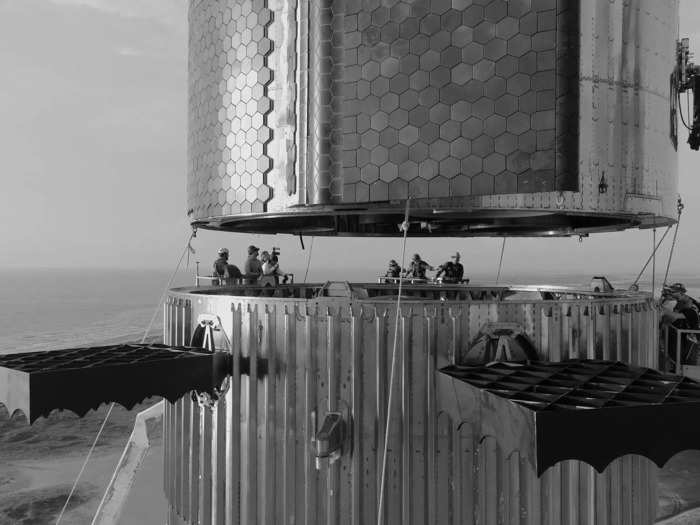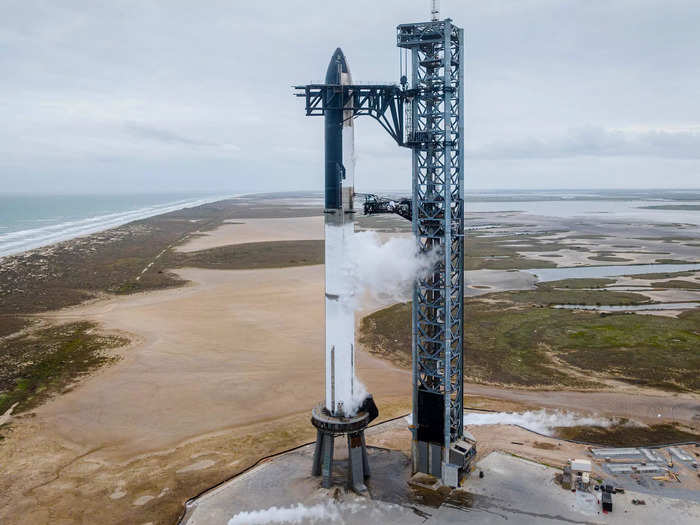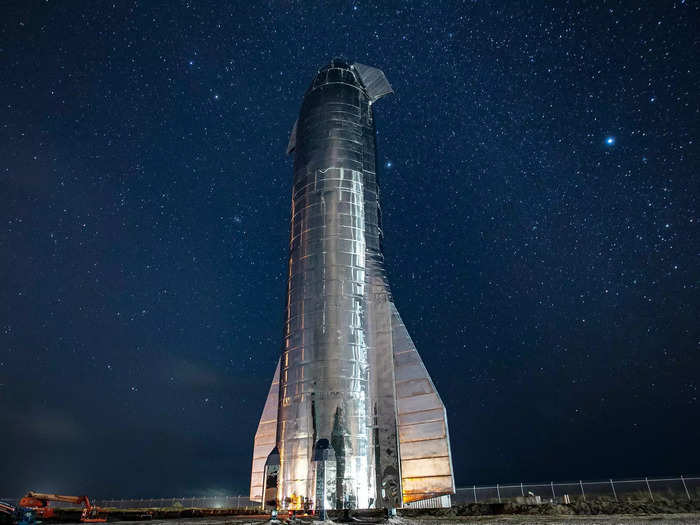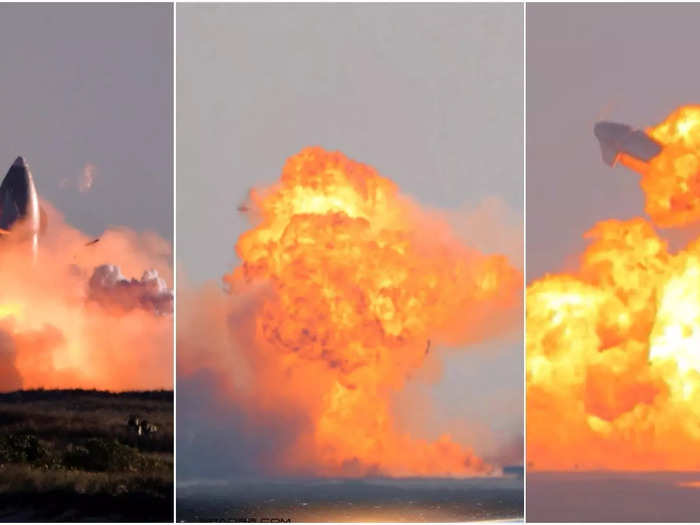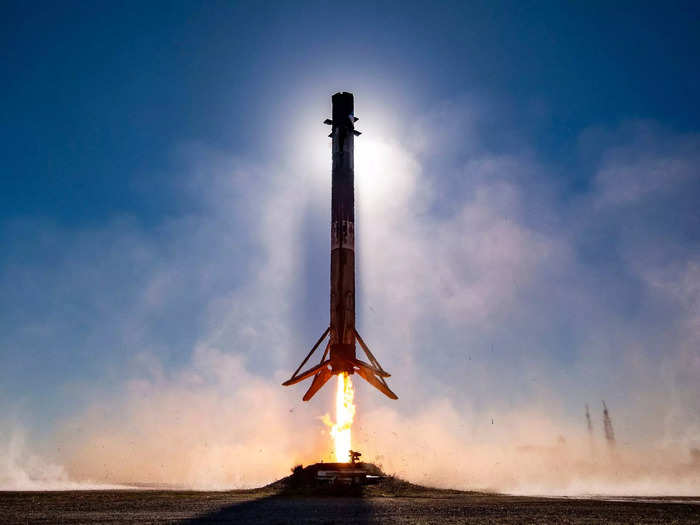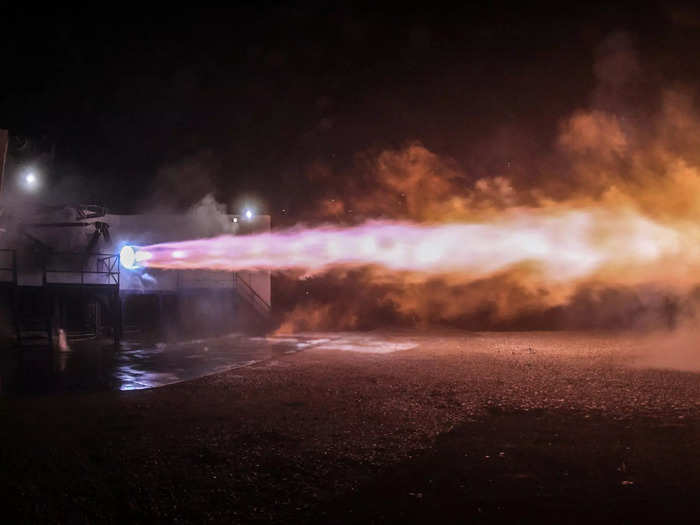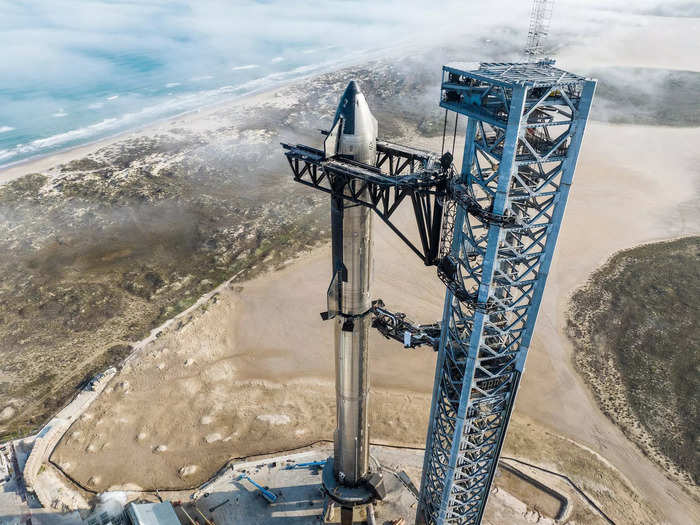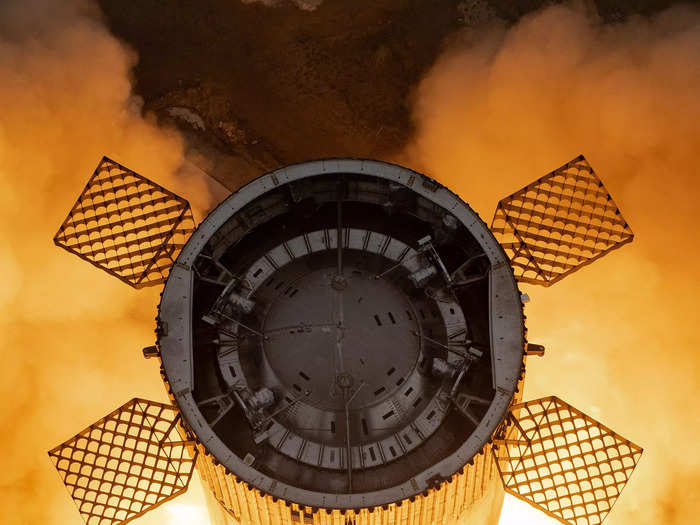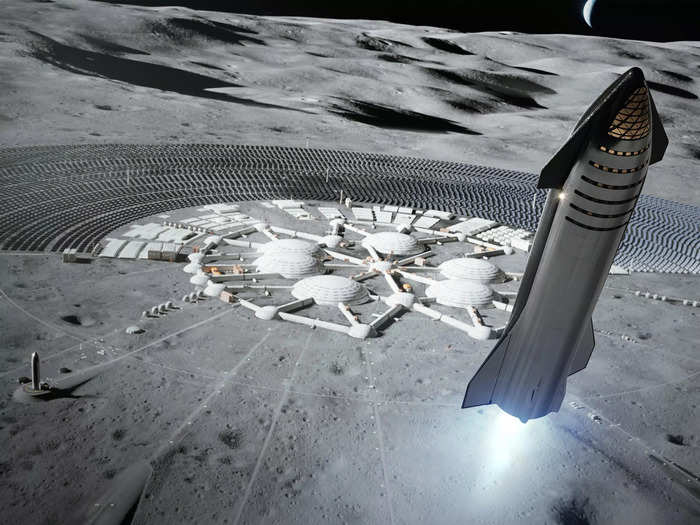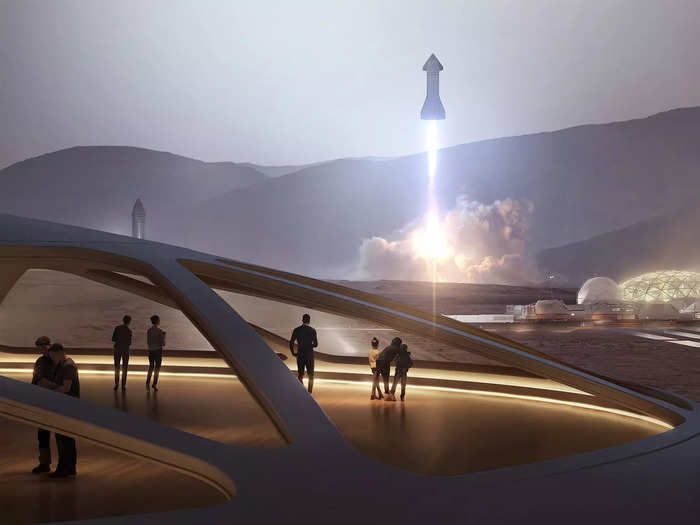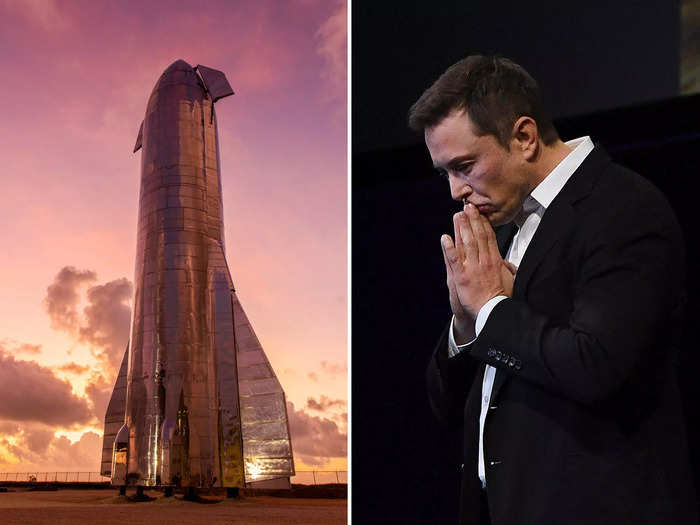A static fire test of Starship on 9 February 2023 (left). On the right, SpaceX CEO Elon Musk, is pictured on 1 December 2020 in Berlin, Germany.SpaceX; Britta Pedersen-Pool/Getty Images
- SpaceX is in the final stages of testing the world's biggest and most powerful rocket.
- Elon Musk says the reusable Starship rocket could take its maiden flight in March.
Elon Musk is known for his boundless ambition, which seems to defy every limit put in front of him.
Space is no exception. The billionaire has set his sights high: he wants to launch the world's biggest, most powerful rocket, and then use it to take humans to the moon and then Mars.
After over 10 years of development, Musk announced SpaceX is ready to attempt the maiden flight of its Starship mega-rocket in March.
"If Starship is successful, I have little doubt that it's going to be the workhorse that will bring humans back to the moon and Mars" Olivier de Weck, professor of aeronautics, astronautics, and engineering at MIT, told Insider.
"It's not just a cool rocket project, but literally it has the potential to change the fate of humanity," he said.
Here are 14 facts you should know before Starship's first launch attempt.
At the height of about 390ft, Starship dwarfs other rockets.
Engineers assemble the top and bottom parts of the rocket. Starship is around 394ft tall and 30ft wide. SpaceX
At 394 feet, the rocket is taller than any other operational heavy-lift launchers.
It's about 30 feet taller than the SLS mega-rocket, which NASA launched around the moon on its Artemis I mission.
Designing a rocket of this size is quite a feet of engineering, de Weck said.
"A rocket that's twice as big is about eight times as challenging to build and test and fly than rocket half its size," he said.
It's not only the tallest rocket ever created, but also the most powerful.
Starship and Super Heavy are shown stacked on top of each other. SpaceX
SpaceX wants Starship to be the most powerful rocket ever made.
Technically speaking, Starship is the name of the spacecraft, which sits on the top of the rocket.
The bottom part of the rocket is a booster, called "Super Heavy," which packs a real punch.
Thanks to this booster, the rocket generates about 17 million pounds of thrust. That's twice as powerful as NASA's SLS mega-rocket booster, which has 8.8 million pounds of thrust.
The rocket should be able to lift up to 250 metric tonnes of payload into low earth orbit.
Starship is designed to be reusable.
Starship's first test vehicle is shown here. SpaceX
Starship is designed to be reusable, meaning it should be able to come back to earth intact, ready to be used again.
Musk believes that reusable rockets are the future of space travel, allowing companies to cut down on costs and time with every launch.
In 2021, SpaceX landed a reusable prototype of Starship successfully.
From left to right: The SN8, SN9, and SN10 explosions in 2021. Gene Blevins/Reuters; SPadre.com
SpaceX had a breakthrough in 2021 when it managed to land its fifth Starship prototype, called SN15, successfully.
The unmanned vehicle flew about 10km into the sky before coming back down and landing safely on a landing pad around six minutes after takeoff.
One of the previous prototypes had managed to land successfully once before but blew up dramatically just 10 minutes later.
The booster is also designed to return to earth.
A SpaceX booster landing after the SpaceX transporter-6 mission. SpaceX
The spacecraft is not the only part of the rocket that's designed to be reusable. SpaceX also aims for the booster to land safely on earth and be used again.
The rocket's incredible thrust is due to its trademark Raptor engines
Starship testing its Raptor engine. SpaceX
Starship's mammoth thrust comes down to SpaceX's Raptor engine.
Every one of the 10-foot-tall engines generates about 500 pounds of thrust.
These engine use a fuel called methalox, a combination of methane and oxygen, to push themselves forward.
This is a very different type of fuel from SpaceX's other rockets, which use a combination of kerosene and oxygen, or NASA's SLS rocket, which is fueled by oxygen and hydrogen.
"That is not a combination of propellants that we have a lot of experience with," said de Weck.
The advantage of using this fuel is two-fold, he added.
Methane, as a molecule, contains a lot less carbon than kerosene — one carbon atom for methane versus 10 to 16 for kerosene.
Practically, that means that burning methane makes a lot less soot than kerosene, which is useful for an engine you want to reuse.
The other advantage is that it's easy to imagine how you could make methane on Mars to refuel the rocket.
"You need CO2, which is available from the atmosphere of Mars. You need water, which exists on Mars in the form of subsurface ice deposits. And you need energy. So of course you need a chemical plant," said de Weck.
Starship makes clever use of stainless steel, a metal long considered to be too heavy.
A picture of Starship on the launch pad. SpaceX
Unlike other rockets, usually made of aluminum, Starship's body is mostly made of stainless steel.
Using stainless steel can sound counterintuitive — after all, it's a heavy metal, about three times as dense as aluminum.
But there are a few reasons why steel was the right choice.
One was the price — wholesale steel is a lot cheaper than aluminum.
The second is strength. "Steel is much, much stronger than aluminum," said de Weck, so you can make the parts a lot thinner than with aluminum. In the end, the parts turn out lighter.
The third is corrosion. Because these rockets are made to be reusable, they need to stand the test of time. Steel is much better at doing that.
The Super Heavy booster contains 33 Raptor engines.
Each booster contains 33 Raptor engines, so a lot can go wrong when you try to fire them.
"That's the big challenge is getting all these 33 engines to light simultaneously."
"Even if each engine has a 99% probability of working properly, the probability that all 33 will fire at the right time and it is not that high," said De Weck.
SpaceX successfully tested a booster on Thursday.
SpaceX tested the 33 engines on the Super Heavy booster on February 10. SpaceX
Elon Musk conducted a static fire test of the Super Heavy booster on Thursday.
A total of 31 of the 33 raptor engines fired for the few-second-long test, which Musk hailed as a success.
"Team turned off 1 engine just before start & 1 stopped itself, so 31 engines fired overall. But still enough engines to reach orbit!" he said in a tweet.
NASA has teamed up with SpaceX to use Starship in future crewed missions
An illustration of SpaceX's planned Starship rocket landing near a moon base. SpaceX/Twitter
NASA awarded SpaceX a $3 billion contract in 2021 to develop a commercial launcher that could carry humans into space.
NASA expects the launcher to be used on two upcoming Artemis missions to the Moon.
A Japanese billionaire has booked out the rocket's first flight around the moon
Japanese space tourist Yusaku Maezawa. Roscosmos Space Agency/AP
SpaceX has also scheduled civilian-crewed missions on Starship. It is due to carry Japanese billionaire Yusaku Maezawa and a team of eight people of his choice.
Maesawa recently announced the composition of his crew. It includes artists, content creators, athletes, a K-pop star, and a DJ.
The mission, dubbed "dearMoon" by Maesawa, will take Maezawa and his crew to within 200 kilometers of the moon's surface.
In 2020, a year before he launched an open competition for the moon mission, Maezawa said he was looking for a romantic "female partner" to go with him to the moon. He later called off the search.
The rocket could one day be used to cross the world in 30 minutes.
Members of SpaceX's inspiration4 crew are seen training for zero gravity on a parabolic flight ahead of the first civilian crewed flight. Inspiration4/John Kraus
Musk also plans for Starship to be used for earth-to-earth transport.
"With Starship and Super Heavy, most international long-distance trips would be completed in 30 minutes or less," says the SpaceX website.
De Weck said it sounds "probably doable, but maybe not so good for the environment."
De Weck wrote a paper last year about the growing risk of the space industry releasing more greenhouse gas emissions.
Starship's fuel is made up of methane — which is a potent greenhouse gas, much more potent than CO2 if it's not burned up before it's released into the atmosphere.
Musk wants Starship to take the first colonists to Mars.
An artist's rendering of what Starship might look like on Mars. SpaceX
The moon isn't the only thing on our solar system Musk wants to visit.
SpaceX aims to carry humans all the way to Mars on this launcher.
Musk predicted this could happen within the next five years in a tweet on Thursday.
"I must admit to being congenitally optimistic (SpaceX & Tesla wouldn't exist otherwise), but I think 5 years is possible and 10 years is highly likely," he said.
There is a 60-70% chance the launch could go forward, one expert said.
SpaceX, founded by Elon Musk, is building and launching Starship prototypes in Boca Chica, Texas. SpaceX; Mark Brake/Getty Images; Business Insider
SpaceX has made a huge amount of progress since it started developing Starship, de Weck said.
Still, a lot can go wrong before the launch date.
"Will it happen in March? I'm more optimistic about it than I was last July, but I still wouldn't give it more than a 60 or 70% probability," he said.
Still, he called for people not to jump to conclusions too quickly.
"If this launch goes badly if there's an explosion or the booster doesn't return and is not recovered, let's all have patience. Let's keep in mind that this is just one test out of hundreds. And if anything, SpaceX has shown us that they learn a lot from failures," he said.

